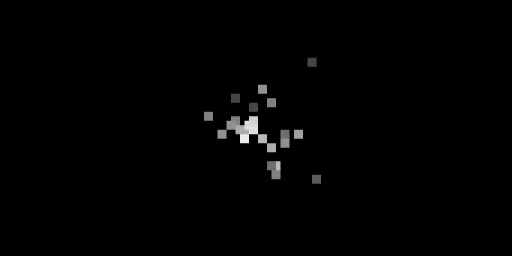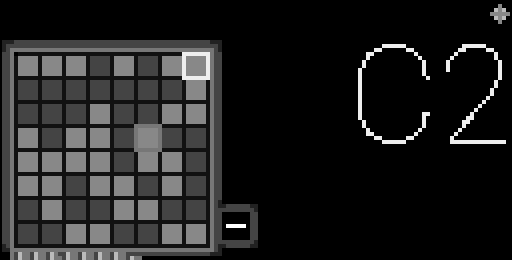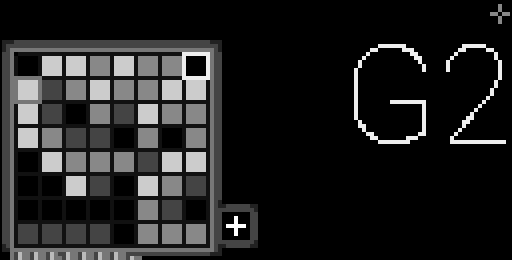
| project name: | esper |
| project url: | https://github.com/cachilders/esper |
| author: | notester |
| description: | an image sonifier |
| discussion url: | https://llllllll.co/t/esper/67885 |
| tags: | sequencer |
esper
Esper is a lofi interpretation of the Esper machine from Blade Runner (and a spiritual port of my Color Theory Max patch).
Take an image, ideally something 64x64 pixels, and upload it to the esper data directory (dust/data/esper/). I like scp, personally, but do you.
scp [PATH/TO/YOUR-IMAGE].png we@norns.local:dust/data/esper/[YOUR-IMAGE].png
Now load the image from the PARAMS > ESPER menu. Ok. That’s nuts and bolts, and it tells you there’s params. The meat and potatoes is you take a pic like this (it’s loaded by default):

And it will be made to look something like this:

Wowzers. OK. So this is the top level view of the image. Each tile is a kind of statistical average of the 64 pixels it comprises (median here, but you can go mean or mode from the params).
Now from this level you’ve got a 64 step sequencer. Start it by toggling the context menu.
Cripes. I forgot to mention, you can use a mouse with this script.
Toggle the menu with either K2 or a right click on the mouse.

You can scroll this menu with any ENC or the mouse. K3 and left click on the mouse are the ACTION buttons. Use an ACTION button to invoke a menu item. Those icons are really small, so there is some hint text next to the BEAT INDICATOR to let you know what you’re toggling.
If the context menu is not invoked, the ACTION button will toggle your zoom depth. Whichever block is selected with be zoomed into and enhanced. That’s where things get more interesting.

You can tell you’re at the enhanced level by the little plus sign in the Esper machine.
From this level ENC2 and ENC3 will allow you to traverse the image, block by block. It may be hard to believe, but these are the actual pixels of the image down here.
Taken as a whole I think that’s like 4,096 steps. Hot crackers!
By default the player will loop over the sequence into which you have zoomed, however, you can choose to TRACK in the sequence direction from the context menu.
You can also choose to REVERSE the sequence direction from that menu, not to mention PLAY and STOP. Hint: push STOP twice to reset the playhead.
That’s it. The voice is provided by Zack Schollz’s mx.synths. You can tune it from PARAMS > mx.synths. If you don’t have it installed this script will not function.